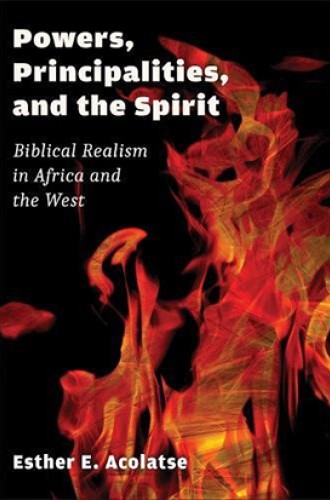A Ghanaian theologian considers demons
Are they real? and other questions in Esther Acolatse’s work.

Powers, Principalities and the Spirit
Biblical Realism in Africa and the West
A pastoral theologian from Ghana who teaches at Knox College and the University of Toronto, Esther Acolatse has built a career on bridging the theological understandings and ecclesial practices of Africa and those of the West. Her new book addresses a topic that may surprise those not familiar with popular Christianity in Africa: demons.
Although it’s impossible to ignore the evil in the world, accepting the existence of a literal devil can look like a step back to superstition or just plain weird. For many of us, Satan is no more than a myth from ancient times, the province of fake preachers, or the delusion of a borderline personality. Academic theologians often assume that miracles, angels, and demons are simply myth.
But this assumption isn’t universally accepted. Many Catholic, Pentecostal, and black church theologians espouse a theology of the supernatural. And most Christians in the world—rich or not, learned or not, regardless of race or culture—accept the reality of supernatural miracles, angels, and evil spirits. It is the virtue of Acolatse’s new work to seek a dialogue between these alternative perspectives on the powers. She seeks wisdom and finds fault in both camps, always with an eye toward better theological understanding and pastoral care.





